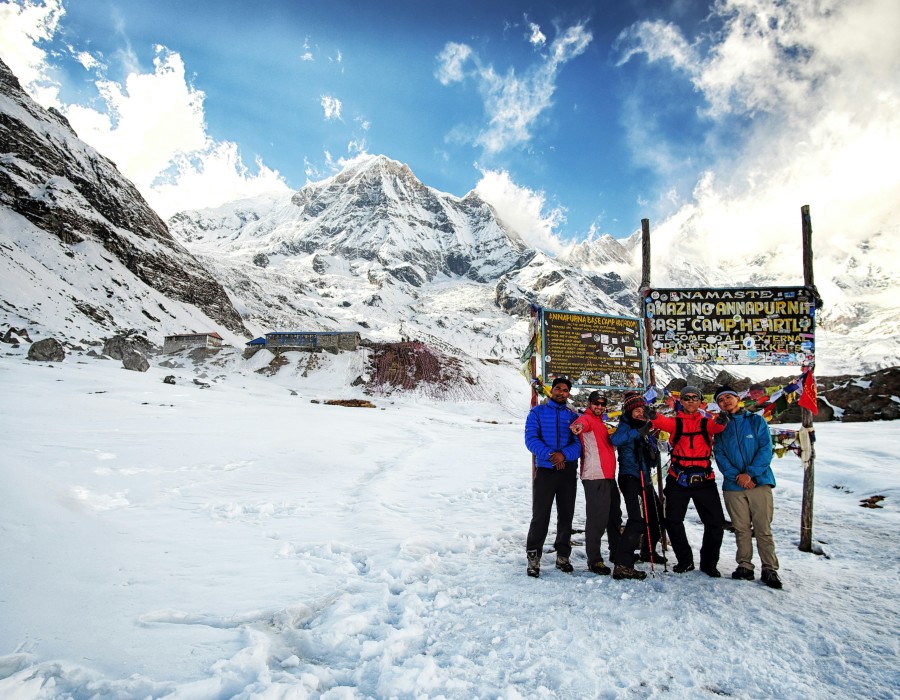The Annapurna Circuit Trek is one of the most rewarding and diverse trekking routes in Nepal. It is more than just a walk in the mountains. It is a long, moving classroom where you see geography, culture, and people shift with every passing day. For years, I have recommended this trek to travelers who want more than just views they want stories, connections, and a better understanding of how people live in different environments. The circuit, which circles the Annapurna Massif, takes you through deep valleys, wide plateaus, high mountain passes, and eventually down into warmer, greener areas. It usually takes between 12 to 18 days, depending on the route and side trips.
The trek begins in Besisahar or further up in Jagat or Chame, depending on the road conditions and your plan. In the first few days, you’ll walk through lush green forests, terraced fields, and traditional villages. This lower region is mainly inhabited by Gurung and Magar communities, who are known for their warm hospitality and strong links to the British Gurkhas. The air is warmer here, and the trails follow the Marsyangdi River as it flows down from the mountains.
As you go higher, the scenery slowly starts to change. Trees get shorter, the air gets cooler, and the houses shift in design. You begin to notice the influence of Tibetan culture, especially as you approach Manang, one of the major stops along the trail. This town sits at over 3,500 meters and is often used as an acclimatization point. Staying here for a day or two not only helps your body adjust to the altitude, but also gives you time to explore nearby hikes like Gangapurna Lake or the Ice Lake trail. Manang is a great place to observe how people have adapted to life in dry, high-altitude regions.
From Manang, the trail climbs toward Thorong La Pass, which is the highest point of the trek at 5,416 meters. This section is both exciting and challenging. It requires an early morning start, strong legs, and a bit of patience. The pass is often windy and cold, but crossing it is a big moment for many trekkers. It’s not just a physical achievement it is a personal one. People often remember this day as a highlight of their time in Nepal.
Once you descend from the pass, you will reach Muktinath, a sacred site for both Hindus and Buddhists. This shift from Tibetan-style villages to temples and pilgrims shows just how rich and mixed Nepal’s cultural landscape is. From here, you’ll either follow the road or take alternate trails through Kagbeni, Jomsom, and Marpha, where you’ll see dry valleys, apple orchards, and people riding motorbikes instead of yaks.
As the trail continues south, the climate warms again. By the time you reach Tatopani (a village known for its natural hot springs) and Ghorepani, the scenery has changed once more. You’re now walking through thick rhododendron forests, with birds calling from the trees and clouds rolling in across the hills. Many trekkers climb to Poon Hill for a sunrise view of the Annapurna range before making their way down to Nayapul, where the trek usually ends.
What makes the Annapurna Circuit special is the constant change in climate, in landscape, in people. You start in humid farmland and end in high alpine terrain. You hear different languages, taste different foods, and sleep in tea houses that are simple but full of character. This trek teaches patience, flexibility, and respect for local ways of life.
You don’t need to be a professional trekker to enjoy the Annapurna Circuit, but a reasonable level of fitness and some preparation go a long way. It’s also important to go slow, drink lots of water, and take time to enjoy the journey. Whether you’re walking beside waterfalls, crossing high bridges, or sharing a cup of tea with a local family, the experience stays with you long after you’ve taken off your boots.




.png)

Comments